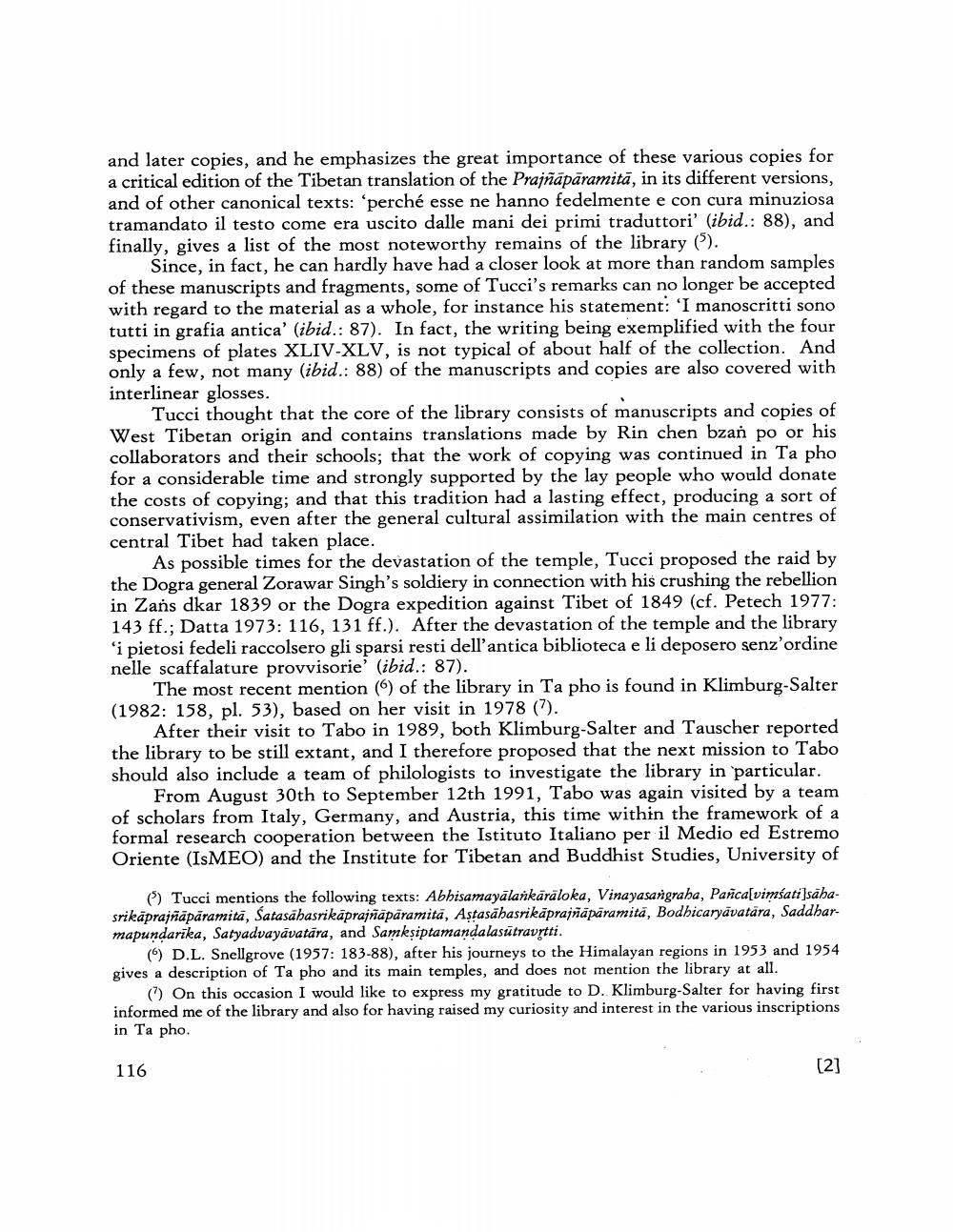Book Title: Report On Kanjur Of Ta Pho Author(s): Ernst Steinkellner Publisher: Ernst Steinkellner View full book textPage 2
________________ and later copies, and he emphasizes the great importance of these various copies for a critical edition of the Tibetan translation of the Prajriäpāramitā, in its different versions, and of other canonical texts: 'perché esse ne hanno fedelmente e con cura minuziosa tramandato il testo come era uscito dalle mani dei primi traduttori' (ibid.: 88), and finally, gives a list of the most noteworthy remains of the library ("). Since, in fact, he can hardly have had a closer look at more than random samples of these manuscripts and fragments, some of Tucci's remarks can no longer be accepted with regard to the material as a whole, for instance his statement: 'I manoscritti sono tutti in grafia antica' (ibid.: 87). In fact, the writing being exemplified with the four specimens of plates XLIV-XLV, is not typical of about half of the collection. And only a few, not many (ibid.: 88) of the manuscripts and copies are also covered with interlinear glosses. Tucci thought that the core of the library consists of manuscripts and copies of West Tibetan origin and contains translations made by Rin chen bzań po or his collaborators and their schools; that the work of copying was continued in Ta pho for a considerable time and strongly supported by the lay people who would donate the costs of copying; and that this tradition had a lasting effect, producing a sort of conservativism, even after the general cultural assimilation with the main centres of central Tibet had taken place. As possible times for the devastation of the temple, Tucci proposed the raid by the Dogra general Zorawar Singh's soldiery in connection with his crushing the rebellion in Zans dkar 1839 or the Dogra expedition against Tibet of 1849 (cf. Petech 1977: 143 ff.; Datta 1973: 116, 131 ff.). After the devastation of the temple and the library 'i pietosi fedeli raccolsero gli sparsi resti dell'antica biblioteca e li deposero senz'ordine nelle scaffalature provvisorie' (ibid.: 87). The most recent mention (6) of the library in Ta pho is found in Klimburg-Salter (1982: 158, pl. 53), based on her visit in 1978 (7). After their visit to Tabo in 1989, both Klimburg-Salter and Tauscher reported the library to be still extant, and I therefore proposed that the next mission to Tabo should also include a team of philologists to investigate the library in particular. From August 30th to September 12th 1991, Tabo was again visited by a team of scholars from Italy, Germany, and Austria, this time within the framework of a formal research cooperation between the Istituto Italiano per il Medio ed Estremo Oriente (IsMEO) and the Institute for Tibetan and Buddhist Studies, University of (5) Tucci mentions the following texts: Abhisamayalankäräloka, Vinayasangraha, Pañcalvimsati]sahasrikāprajñāpāramitā, Satasahasrikāprajñāpāramitā, Aṣṭasahasrikāprajñāpāramita, Bodhicaryavatara, Saddharmapundarika, Satyadvayavatára, and Samkṣiptamandalasútravṛtti. (6) D.L. Snellgrove (1957: 183-88), after his journeys to the Himalayan regions in 1953 and 1954 gives a description of Ta pho and its main temples, and does not mention the library at all. (7) On this occasion I would like to express my gratitude to D. Klimburg-Salter for having first informed me of the library and also for having raised my curiosity and interest in the various inscriptions in Ta pho. 116 [2]Page Navigation
1 2 3 4 5 6 7 8 9 10 11 12 13 14 15 16 17 18 19 20 21 22
